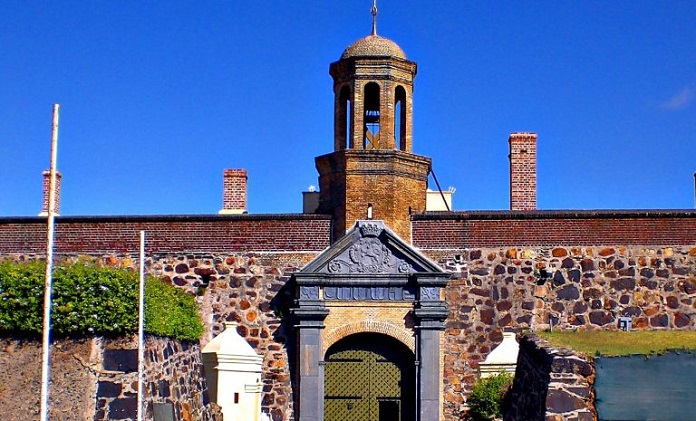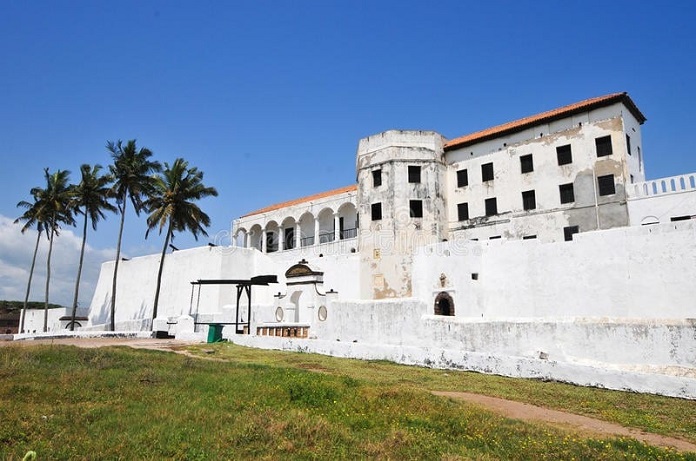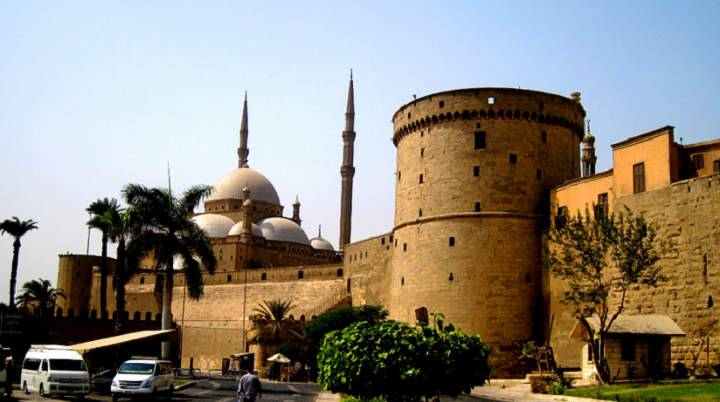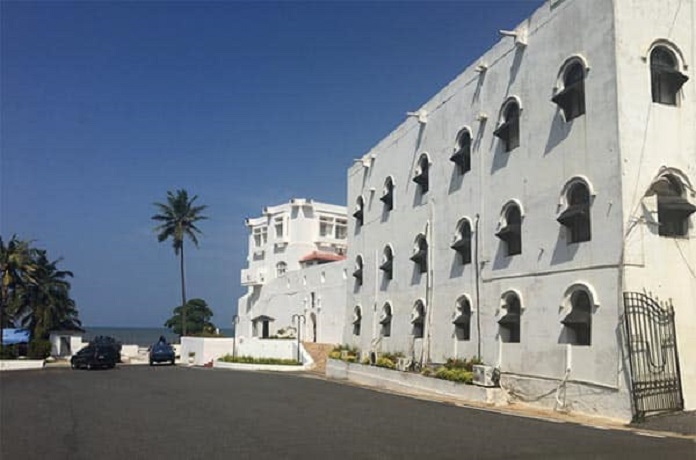The fantasies of most children start with building a castle out of sand or clay on the playground, making sure it’s firm and has some glamour. Different castles that are a reality have the same peculiarities and serve their different purposes, hence their varying architecture. Visiting a continent like Africa, many of these beautiful ancient castles got history and unique beauty that are unmatched.
The African continent is incredibly diverse with hidden gems at nearly every corner. It is home to many ancient and complex societies, cultures, identities, beautiful nature, and history that have thrived over the course of hundreds of years. Ancient castles existed in these societies and they have stood the test of time – from wars and famines to floods and bush fires. Here’s a rundown of some of the amazing castles that still exist today in Africa.
1. Fort Christiansborg
- Location: Osu, Accra, Ghana
- Year Built: 1666
- Owned By: Ghanaian Government
- Built By: Denmark-Norway
- For What Purpose: Trans-Atlantic Slave Trade
Fort Christansborg, also called Osu Castle, was built by Dutch merchant Henry Caerlof in 1652. Ownership of the castle has changed hands from Denmark-Norway to Portugal, the Akwamu tribe of Ghana, the British, and then the independent Ghanaian government. It is strategically situated at the intersection of important inland and transatlantic trade routes. The structure has been rebuilt many times and has served different purposes throughout history. In addition to having served as the seat of government, it has been used as a constabulary mess and a psychiatric asylum.
With Ghana’s independence from Britain in 1957, Fort Christiansborg Castle was renamed Ghana’s Government House. The castle served as the seat of the Ghanaian government from Kwame Nkrumah‘s time down to President Flt. Lt. Jerry John Rawlings. In 2009, however, President Kuffour decided to move the seat of government into Flagstaff House, what is now known as Jubilee House.
Presently, Fort Christianborg is not open to the public and photography is limited, but it retains interesting features in an unusually shaped building that includes a clinic, café, and shopping center while the surrounding grounds are home to a variety of exotic birds.
2. Citadel of Qaitbay
- Location: On the Mediterranean sea coast in Alexandria, Egypt
- Year Built: 1477 AD
- Owned By: Egyptian Government
- Built By: Sultan Qaitbay
- For What Purpose: Defensive Fortress
Located on the coast of the Mediterranean sea on the eastern side of the northern tip of Pharos Island at the mouth of the Eastern Harbour, the Citadel of Qaitbay in Alexandria, Egypt is a defensive fortress considered to be one of the most important defensive strongholds in the region. It was the most important piece of the fortification system of Alexandria in the 15th century AD, guarding the city against the crusaders and Turks among other threats.
The Citadel of Qaitbay in Alexandria was constructed on the ruins of the famous Lighthouse of Alexandria, one of the Seven Wonders of the Ancient World. The ancient lighthouse was constructed in the 3rd century but after several disasters that occurred in the 11th and 14th centuries, it was destroyed.
Circassian Sultan Qaitbay whose reign began in the late 15th century (1468 AD) had a huge interest in art and architecture. When he visited the old lighthouse in 1477 AD, he ordered a fortress to be built on its foundations. Construction lasted about 2 years and cost more than a hundred thousand gold dinars. Qaitbay is considered to be the most important builders of this period as he oversaw the construction of many monuments around Egypt, including the Madrassa and the funerary complex in Cairo.
Although the Citadel of Qaitbay holds no serious function in our recent time, it still exists and serves as a tourist attraction.
3. Fort of Santa Cruz
- Location: Oran, Algeria
- Year Built: 17th Century
- Owned By: Algerian Government
- Built By: The Spanish
- For What Purpose: Military Base

Built 1300 feet above the sea at the top of Mount Murdjadjo, Fort Santa Cruz has repeatedly been damaged by invading armies and earthquakes. But three centuries later, the French tried to remodify it to what it is today. The castle is now a listed national monument and a testimony of Algerian-French-Spanish history.
To access the premises, visitors will ride a cable car or drive a very steep road. At the top, you can take in a 360° view of Oran’s bay, Mers-El-Kebir’s bay, and the entire city. You can also admire the Santa Cruz chapel and its ivory dome, erected during the outbreak of cholera in the late 19th century. The chapel has a y,Virgin Mary statue, a replica of Lyon’s Notre-Dame de Fourvière.
4. Castle of Good Hope
- Location: Darling St & Buitenkant St, Cape Town, South Africa
- Year Built: 17th Century
- Owned By: South African Government
- Built By: The Dutch East India Company
- For What Purpose: Replenishment Station for Ships, Fortress

Having served as the seat of government and military operations for two centuries, the ancient castle is now known as home to South Africa’s Military Museum where you could find an impressive display of 17th to 19th-century military artifacts.
5. Elmina Castle
- Location: Cape Coast, Ghana
- Year Built: 1482
- Owned By: Ghanaian Government
- Built By: The Portuguese
- For What Purpose: Trading Settlement

Ghana took control of the castle after its independence. It was then extensively restored by the Ghanaian government and now serves as a major tourist attraction. The edifice is also recognized by UNESCO as a World Heritage Site.
6. Fasil Ghebbi
- Location: Gondar, Amhara Region, Ethiopia
- Year Built: 17th Century
- Owned By: Ethiopian Emperors
- Built By: Emperor Fasilides
- For What Purpose: Home of Ethiopian Emperors
Marked as the first two-story structure in Ethiopia, this beautiful edifice covers an area of about 70,000 square meters. The castle is divided by curtain walls and within which is pierced by twelve gates. Within the Fasil Ghebbi palace compound is the Castle of Emperor Fasilidas, the Castle of Emperor David, the Castle of Emperor Iyasu, the Library of Tzadich Yohannes, the Chancellery of Tzadich Yohannes, the Palace of Mentuab, and Banqueting Hall of the Emperor Bekaffa.
These emperors amongst others travel around moving their camps but King Fasil (Fasilidas) settled in Gondar and established it as a permanent capital in 1636. Fasil Ghebbi shows an incredible interface between different religions. After the Castle’s decline in the 19th Century, Gondar served as a commercial facility mainly for travelers and visitors. It serves this purpose till today. Inside the castle is a single long hall, which “the usual arched windows and doorways provided light and access”. As of 2002, Dawit’s Hall lacks a roof. The site was in 1979 engraved as a UNESCO World Heritage Site.
7. Saladin Citadel
- Location: Salah Salem St, Al Abageyah, El-Khalifa, Cairo Governorate, Egypt
- Year Built: 1176 – 1183
- Owned By: Egypt
- Built By: Saladin
- For What Purpose: Military Defense

One of the citadel’s historically unforgettable features is a relief depicting an Egyptian vulture that can be seen on its western wall. Although headless today, it is believed to have originally been a double-headed eagle. The eagle was later redesigned and used as a national symbol after the Egyptian revolution of 1952 and is still used as Egypt’s official coat of arms.
The Citadel of Saladin was mainly used as a military barricade or defense. In 1983, it became a UNESCO World Heritage Site and was opened to visitors.
8. Duwisib Castle
- Location: Southern Namibia
- Year Built: 1909
- Owned By: Namibian Government (Namibia Wildlife Resorts)
- Built By: Captain Hans Heinrich von Wolf
- For What Purpose: Stud Farm
Duwisib Castle is one of the most exceptional structures that is located in the southern parts of Namibia, somewhere in the middle of deserts and farmlands. Captain Hans Heinrich von Wolf and his wife, Jayta Humphreys, acquired 55,000 hectares of land and used it for horse farming. Building the castle on the property commenced in 1908 and imported German stones by the hands of European stonemasons were used for the construction.
The inauguration of the 22 roomed castle was attended by dignitaries in the southwestern part of Africa. Jayta never returned to Africa after her husband died in the first world war. The beautiful structure transferred ownership over the years but is now under the management of the Namibian Wildlife Resort. The ancient castle is constantly flooded with tourists and travelers and the castle serves as a resting place for visitors who wish to stay in a refurbished bedroom.
9. Fortress of Sao Miguel
- Location: Calçada de São Miguel, Luanda, Angola
- Year Built: 1576
- Owned By: Angolan Government
- Built By: The Portuguese
- For What Purpose: Defensive Edification

Fortress of São Miguel was the first defensive edification built in Angola, and Paulo Dias de Novais, the first Captain-Governor of Portuguese Angola, oversaw its construction. It served as the administrative center of the Portuguese colony and was a major outlet for slave traffic to Brazil.
Despite a brief occupation by the Dutch in 1641 CE, the fort has suffered only a little damage over the years. The fortress was also the headquarters of the Commander-in-Chief of the Portuguese Armed Forces in Angola till the year 1975. In the present day, it is home to the museum of the armed forces and the country’s Ministry of Defence and Culture is responsible for its maintenance and preservation.
10. Fort Jesus
- Location: Mombasa, Kenya
- Year Built: 1593-1596
- Owned By: Kenyan Government
- Built By: The Portuguese
- For What Purpose: Military Defense

Between the 17th and 19th centuries, Fort Jesus was captured at least nine separate times. By the early 20th century, the British had gained total control of the fort and used it as a prison until the late 1950s when the Kenyan government took over and turned it into a historical site. Today, the fort has grown to become one of the most visited areas in Mombasa and has been declared a World Heritage Site by UNESCO.
Recap of the 10 Ancient Castles That Still Exist in Africa Today
1. Fort Christiansborg
2. The Citadel of Qaitbay
3. Fort of Santa Cruz
4. Castle of Good Hope
5. Elmina Castle
6. Fasil Ghebbi
7. Saladin Citadel
8. Duwisib Castle
9. Fortress of Sao Miguel
10. Fort Jesus



